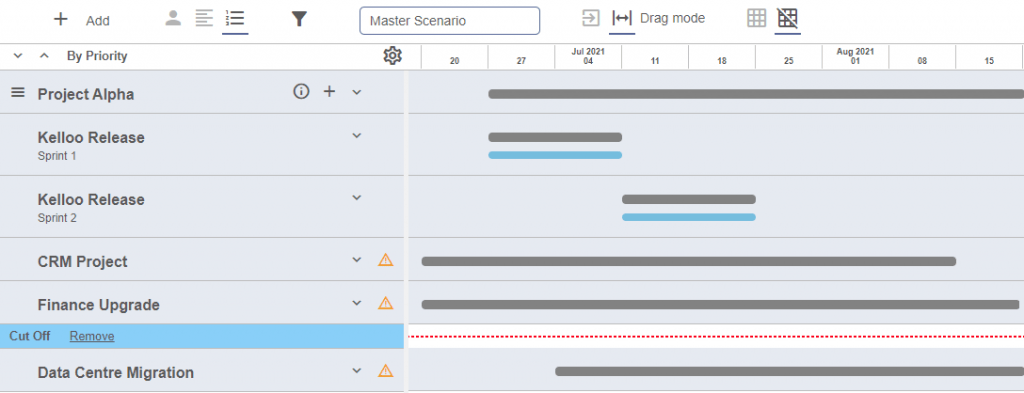
Resource planning is like conducting a symphony for your resources and projects. It’s about getting the right people with the right skills at the right time to make your projects a success.
But what are the essential resource planning best practices you need to adopt to get your resource planning process running like a dream? Kick back, grab a coffee, and take a look at these 13 top tips and ideas to get your resource planning process running like a well-oiled machine.
Little changes can make your resource planning hum like a well oiled machine. Ready to get oiling?
Table of contents
Ensure you capture all of your resource demand
You need to ensure that your resource plan contains all your resource requirements (also known as resource demand). So this means including all the projects you are working on. It also needs to include all the “other” work and business as usual work your resources work on.
This is probably the most important piece of advice I can give you. If you forget about the “other stuff” your people do, your resource plan will be set up to fail.
Account for administration, meetings etc. in your resource plan
Also include in your resource plan the time your resources spend doing things like administration, meetings, etc.
There are two ways to do this:
- Include admin etc. as demand items in your plan (like a project).
- Reduce the supply of your resources by the amount of time they spend on admin etc.
Kelloo's resource management tools
Resource planning, forecasting and reporting in one place. We help you get the most from your projects and people.
Set an appropriate planning duration
At Kelloo we don’t really see much point in having resource plans that run out for multiple years. Why waste time planning something that will change anyway? We think a plan extending out around 12 months provides the optimum balance between detail, usability, and ease of maintenance.
Near, mid and long term plans
Resource planning should aim to cover these time frames.
Resource budgeting. This element of your plan is looking between 6 months and 12 months out. It has a sketchy level of detail and may include demand that is still under consideration / yet to be approved.
It gives you a good idea of the required resource levels. Planning will be at the skill set or team level – not by individual resources. Estimates will be captured at a high level and not decomposed into tasks (think more like a line per project or programme).
Resource forecast. This element of your plan is looking between 1-2 months out and 6 months out.
It is going to be more firm in terms of the demand and should give us a pretty clear picture of what we will be working on. We will still be planning at the skill set or team level and the plan will not be decomposed into tasks.
Resource schedule. The detailed element of your resource plan should be looking at the next 1 – 2 months.
We still won’t be planning at the task level, but perhaps a little lower than the project level – maybe phase level. While we are probably still planning at the skill set level for larger teams, smaller teams or those where niche skills are only provided by key individuals may choose to plan by named resource.
The key take away from this point is that near term plans focus on the specific resources required, whereas longer term plans describe the skills required.
It helps if you can present your resource plans and forecasts visually thereby allowing managers to easily spot constraints or shortfalls in resource availability and capacity. The following screenshots show the resource capacity plan and utilization heatmap from Kelloo.


Create a demand management process
Following on from (1) above, you need to put in place a demand management process.
This doesn’t have to be overly complicated but you need a way for the wider organization to start feeding requested demand into the resource planning process and to communicate back to the organization the status of their requests.
Demand management is a way to ensure that all ideas, projects and work requests are captured and reviewed.
Watch your resource constraints
Generally, between 10 – 20% of your resources will serve as bottlenecks as these are the resources that everyone is competing for.
There are typically two reasons for this:
(a) They have a skill set that is limited within your organization; or
(b) They have a reputation as the guys to have on your project due to their experience.
Either way, these guys can block up your resource plan quickly. You need strategies to deal with this. However, you also need to work your schedule around these constrained resources otherwise your end dates will be bound by them.
A resource manager should try to reduce knowledge silos building up within the organization to prevent resource constraints becoming an issue.
Prioritize your projects
Ensure you prioritize your projects plan and allocate your resources to the highest priority demand. Ideally, you want something more granular than a high, medium, or low status so consider a building a project scorecard to figure out your priorities.

Regularly review your resource plan
For work that is currently underway, you want to be getting updated work estimates and feeding them into the resource schedule element of your plan (i.e. the next 1-2 months) at frequent intervals. You also need to keep an eye on changing priorities and re-organize your plan around these.
Organize and categorize your resources
To help organize your resources consider placing them in resource pools. Then work out the skills they provide your organization and record those also. When resource planning, you will want ways to narrow down your choice of resource.
Ensure you can do what if / scenario modelling
Things change and you want to be able to model this within your resource plan. Often this is called scenario modelling or what-if modelling. Typical things you may want to model are:
- Changes to resource supply (hire or fire staff)
- Changes to working hours (periods of over-time / under-time)
- Putting work on hold
- Changing the priorities of work
- Changing work estimates
To do this you need your resource plan to allow you to apply the metrics above against your plan and see the effect. What if modelling needs to be simple to undertake so you can evaluate multiple competing scenarios quickly and easily. If it involves copying spreadsheets and hacking formulas – you are using the wrong tools and approach.
The importance of being able to compare and evaluate different resource plan options cannot be stressed enough. If your resource planning solution does not allow you to do this then find one that does.

Use the technology available
Most folks starting out with resource planning use Excel but quickly run into its limitations. So why not look at dedicated resource planning tools such as Kelloo.
Assign approval states to your demand
For each demand item in your plan categorize it so you can easily identify demand by approval state. A nice sequence of approval states might run something like this:
- Requested
- Under review
- Seeking more information
- Estimating
- Approved
- Planning
- Rejected
Focus on reporting
It is important your resource plan gives you answers to questions you need to make decisions.
As a resource planner, these are the kinds of questions you are going to be regularly asked and you need to be able to provide accurate answers fast.
- Are key projects on track?
- Are they adequately staffed?
- Do we have resources sitting around with not enough to do?
- What are people working on?
- What capacity do we have to take on new work?
And that doesn’t mean gathering up out-of-date spreadsheets and mashing them together to get answers. If you don’t have a way to get these kinds of answers out of your resource plan fast then you need to find a way.






